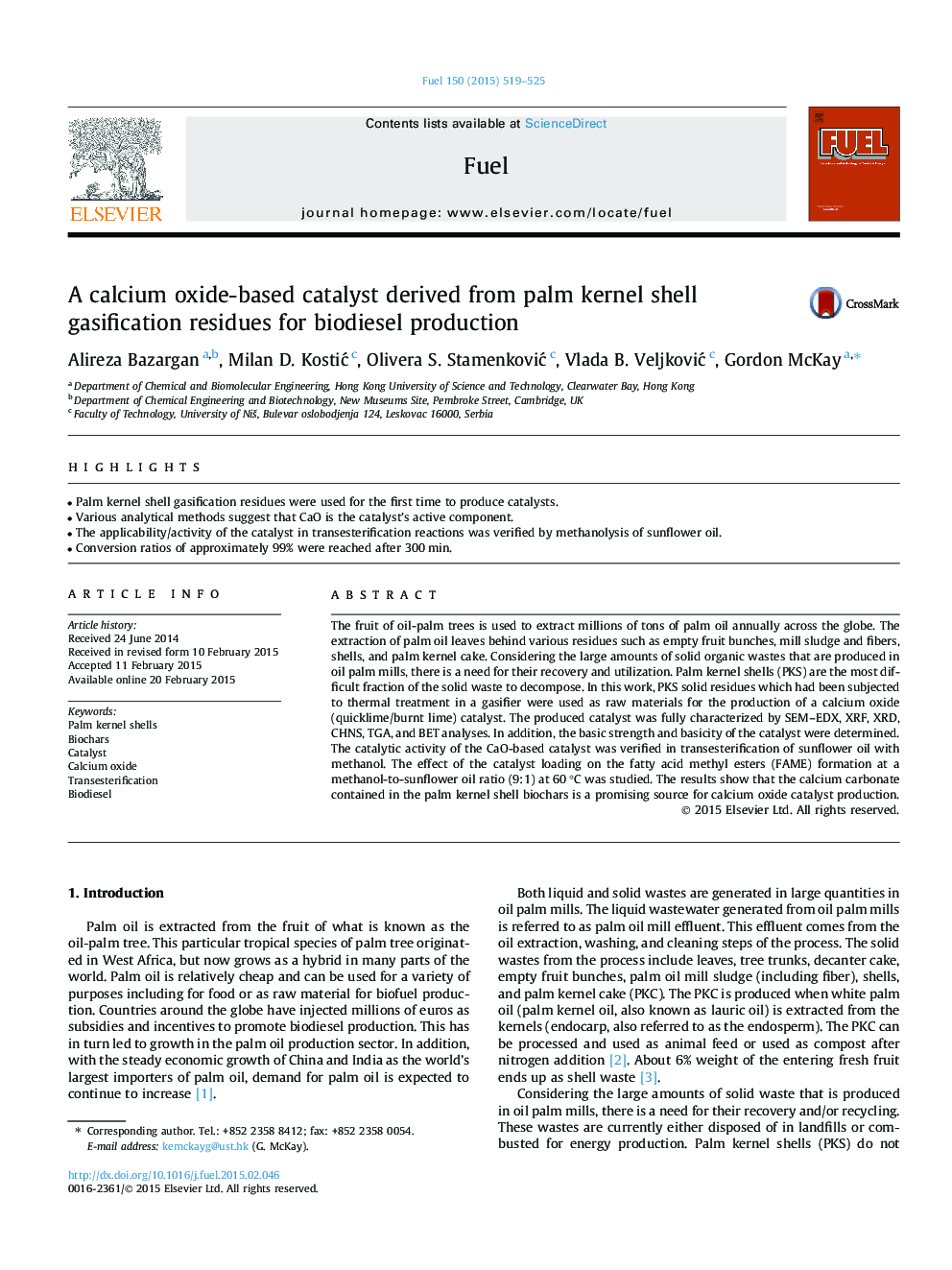| Article ID | Journal | Published Year | Pages | File Type |
|---|---|---|---|---|
| 205738 | Fuel | 2015 | 7 Pages |
•Palm kernel shell gasification residues were used for the first time to produce catalysts.•Various analytical methods suggest that CaO is the catalyst’s active component.•The applicability/activity of the catalyst in transesterification reactions was verified by methanolysis of sunflower oil.•Conversion ratios of approximately 99% were reached after 300 min.
The fruit of oil-palm trees is used to extract millions of tons of palm oil annually across the globe. The extraction of palm oil leaves behind various residues such as empty fruit bunches, mill sludge and fibers, shells, and palm kernel cake. Considering the large amounts of solid organic wastes that are produced in oil palm mills, there is a need for their recovery and utilization. Palm kernel shells (PKS) are the most difficult fraction of the solid waste to decompose. In this work, PKS solid residues which had been subjected to thermal treatment in a gasifier were used as raw materials for the production of a calcium oxide (quicklime/burnt lime) catalyst. The produced catalyst was fully characterized by SEM–EDX, XRF, XRD, CHNS, TGA, and BET analyses. In addition, the basic strength and basicity of the catalyst were determined. The catalytic activity of the CaO-based catalyst was verified in transesterification of sunflower oil with methanol. The effect of the catalyst loading on the fatty acid methyl esters (FAME) formation at a methanol-to-sunflower oil ratio (9:1) at 60 °C was studied. The results show that the calcium carbonate contained in the palm kernel shell biochars is a promising source for calcium oxide catalyst production.
